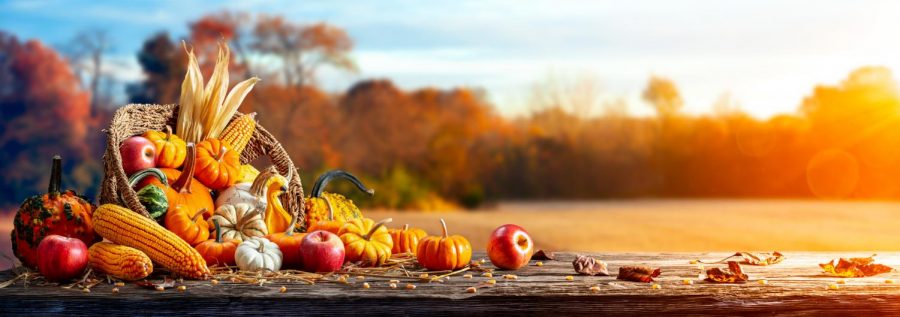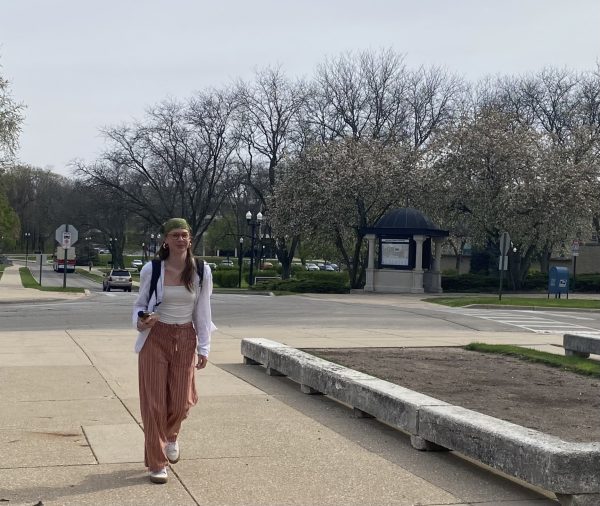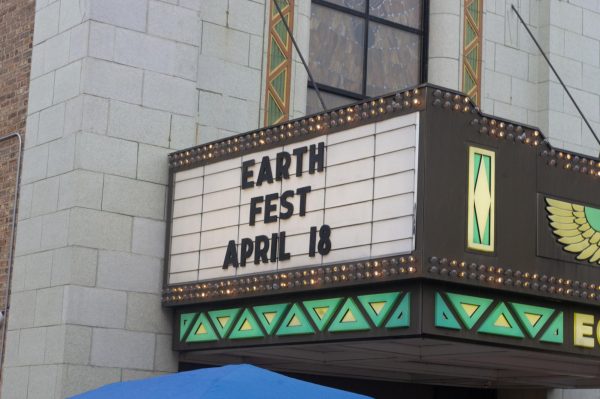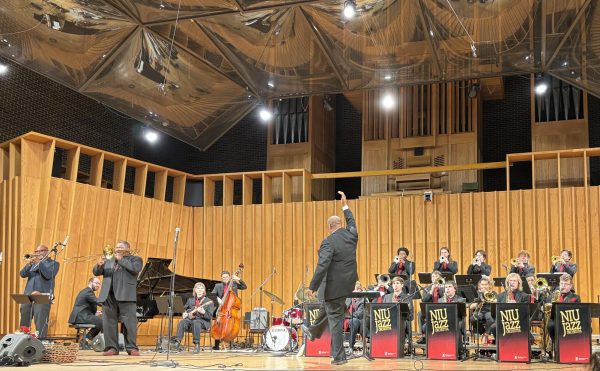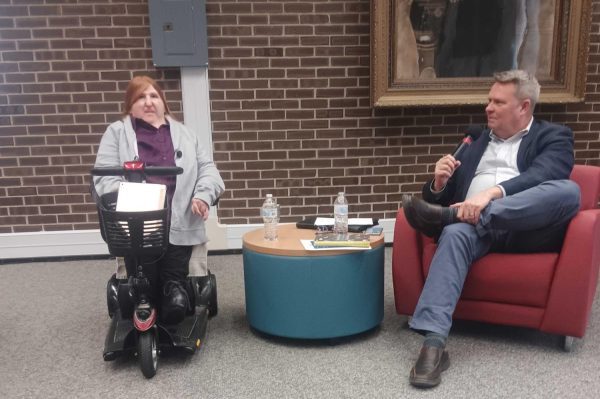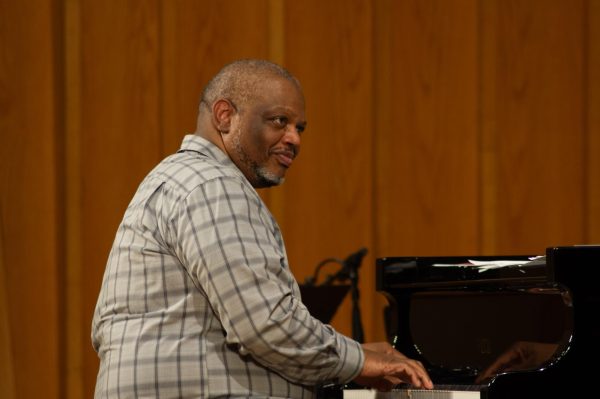History of Thanksgiving
Basket of pumpkins, apples and corn on a harvest table.
November 25, 2021
Turkey, stuffing and family gatherings are a staple of the Thanksgiving holiday, but the history of Thanksgiving isn’t as well known as we thought.
The origin of the holiday ultimately started with pilgrim settlers from England. They came to the New England region coined “New World” to start a new life in the 17th century. The settlers brought their religious ideas and holidays with them, including the “All Saint’s” feast and the holiday later known as Thanksgiving.
“This was not a uniquely American celebration,” History professor Sean Farell said. “Protestant communities all over Europe held prayers of Thanksgiving.”
However, what would set this holiday apart from its counterparts in Europe and Latin America is the interactions between the Native American tribes and the pilgrim settlers. When the pilgrims arrived in New England, the land seemed uninhabited but was formerly the territory of the Patuxent Indians, who were wiped out by a deadly smallpox epidemic. The only remaining member of the tribe was a man named Tisquantum, or more commonly known as “Squanto,” History professor Natalie Joy said.
Under the direction of another chief named Samoset, Tisquantum came from England, where he was formerly enslaved to meet the pilgrims at New England. Along with the Wampanoag leader, Massasoit taught the colonists to catch eels, grow corn and survive during the harsh New England winters. However, this was not entirely out of goodwill.
“Massasoit saw the superior technology that the English colonists brought could help them in their long rivalry against the Narragansett people,” Joy said.
The Thanksgiving festival as we know it was first celebrated in 1621 after the first harvest of the year and lasted for about three days. Originally, it was only meant for the settlers and the few Native tribes that had helped, but as the gunshots were fired to celebrate the event, more Native Americans came to inspect what was going on. In time, they were welcomed into the celebration and brought their own foods into the celebration, according to the Encyclopedia of American History.
The holiday would remain on the backburner in the United States until 1777, when the newly formed Continental Congress officially offered a proclamation of Thanksgiving for the nation. It wasn’t until 1862, however, that President Abraham Lincoln federally recognized Thanksgiving as the holiday people know today.


